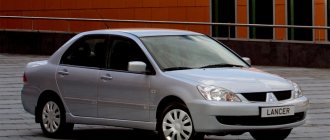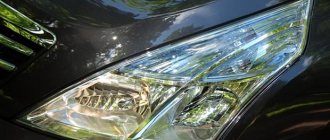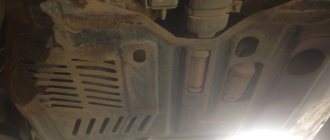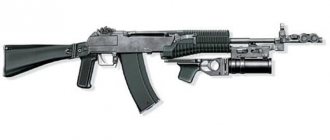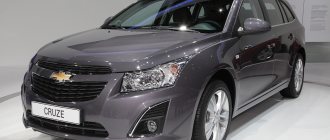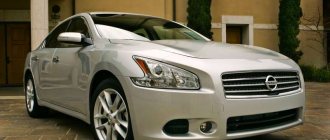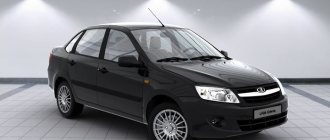The first generation Nissan Teana debuted in 2003. In 2006, the model went through restyling. The sedan received updated headlights and taillights, chrome bumper trim and larger foglights. In 2008, a generational change occurred.
Inside, the driver and front passenger are quite comfortable. But people of average height will feel comfortable in the back. It's a bit cramped here for tall people. The trunk, although large, is not the most spacious - only 476 liters.
Engines
Teana was equipped exclusively with naturally aspirated gasoline engines: two 4-cylinder and two 6-cylinder.
2.0 l /136 hp R4 (QR20DE)
2.3 l /173 hp V6 (VQ23DE)
2.5 l /170 hp R4 (QR25DE)
3.5 l /245 hp V6 (VQ35DE)
All engines are quite reliable. They are equipped with a timing chain drive, which can last more than 300,000 km. The engines themselves usually run more than 500,000 km before the first major overhaul. But first, you will have to change the ignition coils and valve cover gasket. The first time, after approximately 150,000 km.
With a mileage of more than 200-250 thousand km, oil consumption may significantly increase. Most often it's all about the PCV valve (crankcase ventilation valve). In this case, oil can be found in the intake manifold. Less often, it is possible for the rings to get stuck, which occurs when using low-quality oil and delaying its replacement.
If knocking and vibrations appear after 100-150 thousand km, you will have to replace one of the engine support cushions. There are four of them in total: two hydraulic ones - from 4,000 rubles, and two regular ones - from 2,000 rubles.
Unpleasant rattling and vibration can also be caused by worn damper valves. For two round dampers you will have to pay about 5,000 rubles.
Auto review of Nissan Teana
Additional Information:
I bought my Tanka in 2010! Year of manufacture: 2003 Body type: Sedan Transmission: automatic Drive: front Body: About the advantages: — A serious, large, respected car on the road. — Normal sound insulation (with the exception of noise from the wheel arches). At first I tried to start the engine again with the car running (you couldn’t hear it in the parking lot), but then I got used to looking at the tachometer needle. — Comfortable when driving long distances (I have experience driving more than 6,000 km in one trip). — In general, the engine is enough both in the city and on the highway. — Spacious interior and trunk. — Reversing camera, color monitor made it possible to install a player from a computer hard drive into the car (download a bunch of movies and watch in traffic jams, image blocking while driving is removed). I want to install an overtaking camera; I often drive along regional highways (overtaking a convoy of trucks is a big problem). — The interior is suede, best cleaned with Salamander cleaning foam for suede shoes, sold in shoe stores! - .... Well, etc...... a lot has already been written... My friends who, in principle, don’t like Teana, say that mine is an exception... and precisely because of the silver color... silver cars look completely different... Teana at least definitely suits))) About the minuses and illnesses: — For most people, the door locks on the right steering wheel stop working. People may find out in a few months that when they set the car alarm, not all doors close!!! This is a defect in the lock motors - it can be treated either by disassembling and repairing the motor (where the part needs to be thrown away - “varistor”), or by installing closers or replacing the locks with new or used ones, but always with a left-handed one. I have already changed all the locks to used ones with left-handed... so far so good.... — The window motors are dying... Replacement of the entire window regulator. I changed the front left... - Very soft springs - every second one has sagged... Moreover, the new original ones sag in the same way in a few months... The new Teans have the same problem! I didn’t touch the front (they change them to non-original “OVK”), but Zhiguli spacers with a metal overlay are installed above the rear springs (140 rubles per set) and everything returns to normal. I changed and drove 40,000 km on these spacers - everything is OK! - Sometimes, especially in cold weather, the plastic near the windshield rattles... - There is no trunk lid handle - I installed the standard one from the new Camry (it is very neat and is screwed to the metal of the lid) - For some, the high-pressure power steering hose wears out and leaks (a new one costs about 10,000 rub.) — The front engine mount costs about 10,000 rubles!!! It is electronic (automatically changes the stiffness) - For many, it leaks, and specifically for me, the steering rack sweats (but this happened back in Japan) - For many, on bumps, there is a dull knock in the front suspension... This is because the bump stops of the front shock absorbers are wearing out. — Weak CV joints (grenades)… Murano has the same thing… Many people start to crack. Mine started cracking at 110,000 km, but until it dies I’ll keep driving it - it’s not clear which one is cracking. — Low ground clearance of 13 cm — when I raised the rear springs it became much better. (the front also rose a little - although it’s not clear why). All winter I've been crawling on my belly in the snowy ruts in the yard - at first it was annoying, but then I got used to it. — The entire front plastic protection is on pistons, not a single bolt... One hundred percent of the time you will need some kind of pistons - they break and fly off at once!!! - This is what I just remembered off the top of my head... I can tell you a lot more... just ask... 31 Engine: gasoline, 2300 cc, 173 hp. Fuel consumption: 12-15 Ownership period: 9 months I drove it before (Toyota mark 2, Toyota Estima Emina). I bought it and didn’t regret it, the car drove 50 thousand in 9 months! never let me down! I installed an active subwoofer and an amp! rocks with dignity!!!!
Transmission
A 4-speed hydromechanical automatic was installed with all engines except the top one. For the 3.5-liter unit, a continuously variable variator and 6-speed manual transmission were provided. The last combination is very exotic.
All automatic transmissions are developed by the Japanese company Jatco. They need regular oil renewal - once every 60,000 km. Otherwise, the oil ages, the pressure in the circuit drops, and wear on the gearbox elements increases.
The first troubles with automatic transmission may occur after 200-250 thousand km. In addition to the classic symptoms (shocks and slipping), another one appears - the reverse gear disappears. It is worth noting that small kicks when switching from first to second are a proprietary feature of the Teanovsky automatic machine.
The CVT turned out to be less durable for most owners. First of all, due to the sporty driving style and neglect of timely updating of the transmission fluid. Problems often appeared after 100-150 thousand km. There were tremors, howling, whistling, and the traction disappeared. For more caring and calm drivers, the CVT can cover 250-350 thousand km. The cost of repairs will be 40-60 thousand rubles, and in advanced cases it can reach 100,000 rubles.
Technical specifications Nissan Teana j32
Nissan Teana 2008 - 2014 was sold with three gasoline engines: a four-cylinder 2.5 QR25DE, a six-cylinder 2.5 VQ25DE and another V6 3.5 VQ35DE. All engines were combined with a continuously variable automatic transmission (variator), and all-wheel drive was only available with a four-cylinder QR25DE power plant.
Under the hood is a V6 3.5 VQ35DE, isn’t 249 horsepower too much for Teana?
Dimensions
Teana j32 has not changed much in size compared to the first generation, and the wheelbase and ground clearance of the cars are the same.
Dimensions and weight:
- length, height, width (cm) – 485, 179.5, 147.5;
- wheelbase (cm) – 277.5,
- ground clearance (mm) – 135, after restyling in 2011 – 150;
- trunk volume (l) – 488;
- fuel tank volume (l) – 70;
- weight (kg) – approximately 1500 (depending on the installed engine and configuration).
Engines and gearbox
Engines on the Teana j32 were installed only gasoline: one four-cylinder 2.5 QR25DE and two six-cylinder 2.5 VQ25DE, 3.5 VQ35DE.
The V6 base engine sounds unusual, but it’s true. Pictured is 2.5 VQ25DE
Characteristics of V6 2.5 VQ25DE:
- power (hp) – 182;
- torque (N/m) – 228;
- compression ratio – 10.3;
- acceleration to 100 km/h (s) – 9.6;
- maximum speed (km/h) – 200;
- fuel consumption (city, highway, mixed) – 12.1, 8, 9.5.
The Teana with the 2.5 QR25DE engine has been available since 2010 only with all-wheel drive. Its characteristics:
- power (hp) – 167;
- torque (N/m) – 240;
- acceleration to 100 km/h (s) – 9.8;
- compression ratio – 9.6;
- maximum speed (km/h) – 180;
- fuel – the use of AI-92 gasoline is allowed;
- fuel consumption (city, highway, mixed) – 12.5, 7.5, 9.4.
Four-cylinder 2.5 QR25DE
The top engine was the V6 3.5 VQ35DE, parameters:
- power (hp) – 249;
- torque (N/m) – 326;
- compression ratio – 10.3;
- acceleration to 100 km/h (s) – 7.2;
- maximum speed (km/h) – 210;
- fuel consumption (urban, suburban, mixed) – 13.8, 8.2, 10.2.
Regardless of the engine, the Nissan sedan is equipped with a continuously variable variator XTRONIC CVT, which is controlled electronically and adaptively changes the gear ratios of virtual gears.
All-wheel drive and chassis
With all-wheel drive, there is no need to fear such a snowball.
The Nissan Teana j32 could be equipped with all-wheel drive only with a four-cylinder 2.5 QR25DE engine. The transmission itself is the same as on the Murano All Mode 4x4, but the software control of the multi-plate clutch has been changed. At low speeds, four-wheel drive can be locked by placing the control washer in the Lock position. Then the traction between the front and rear wheels will be distributed 57:43.
Teana's front suspension is independent with MacPherson struts; it has been greatly redesigned compared to the previous generation, and is perceived as more comfortable. The rear suspension is an independent multi-link design.
Another beautiful winter photo with Teana, what do you think?
In expensive trim levels of the Nissan flagship, regardless of the installed engine, the wheels will be 215/55 R17, with simpler equipment options - 205/65 R16. The brakes are disc brakes front and rear, and ventilated on the front wheels.
Chassis
Teana's suspension copes well with small irregularities, but handles real bumps too loudly. The sedan is quite docile in corners, and body roll is small.
Some owners complained about a knocking sound in the chassis even from the first kilometers. Many mechanics believe that it's all about the shock absorbers. Fortunately, silent blocks and ball bearings do not require attention until 150-200 thousand km.
The steering rack may knock after 100,000 km, and a little later it may leak. At the same time, the power steering pump may need to be replaced.
Over time, owners notice malfunctions in the ABS, accompanied by the appearance of an error. It is often possible to solve the problem by cleaning the magnetic tape; less often you have to change the sensor. The main thing to remember is that you can’t ride with an error for a long time. This inevitably leads to failure of the ABS unit. The cost of a new unit is 120,000 rubles; a used one can be found for 10,000 rubles. However, the original unit can be restored in a specialized service.
Other problems and malfunctions
The body is not prone to corrosion, but age takes its toll. When examining the oldest cars, you may notice “bubbling” of the coating on the trunk lid, wheel arches and chrome elements.
After 150-200 thousand km, sometimes the fuel gauge needle begins to “fib”. Sometimes the sensor itself is to blame, but more often it’s all about the control unit for measuring instruments and climate control. It is he who is responsible for processing the signal from the sensor. The disease is eliminated by soldering the contacts.
The air conditioning compressor may fail after 150-200 thousand km. For a new one you will have to pay about 30,000 rubles.
Quite often problems arise with door locks, especially the driver's door. The lock stops opening from the outside. The reason is wear of the activator, motor or gears. The functionality of the lock can be restored by replacing faulty elements.
Over time, the back of the driver's seat begins to play. Fortunately, the disease is treated quite simply.
